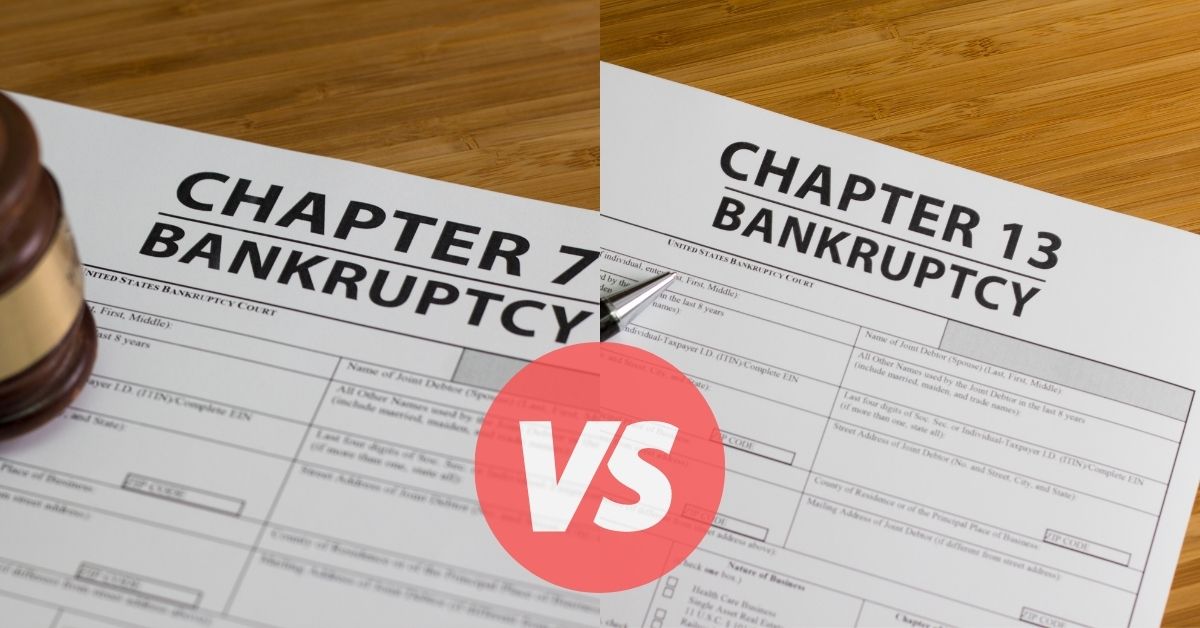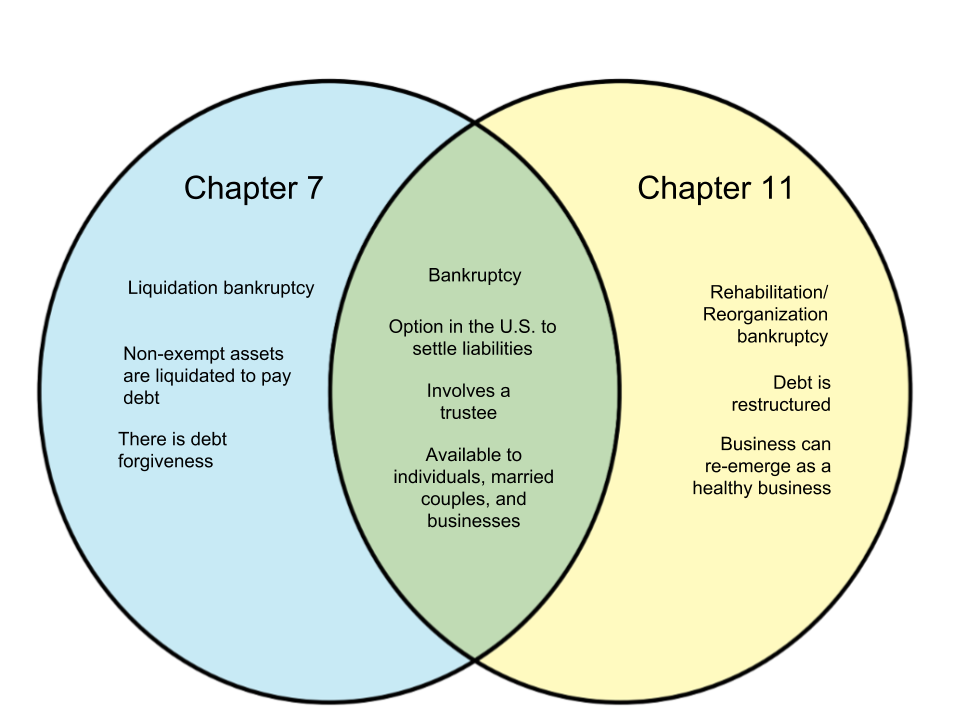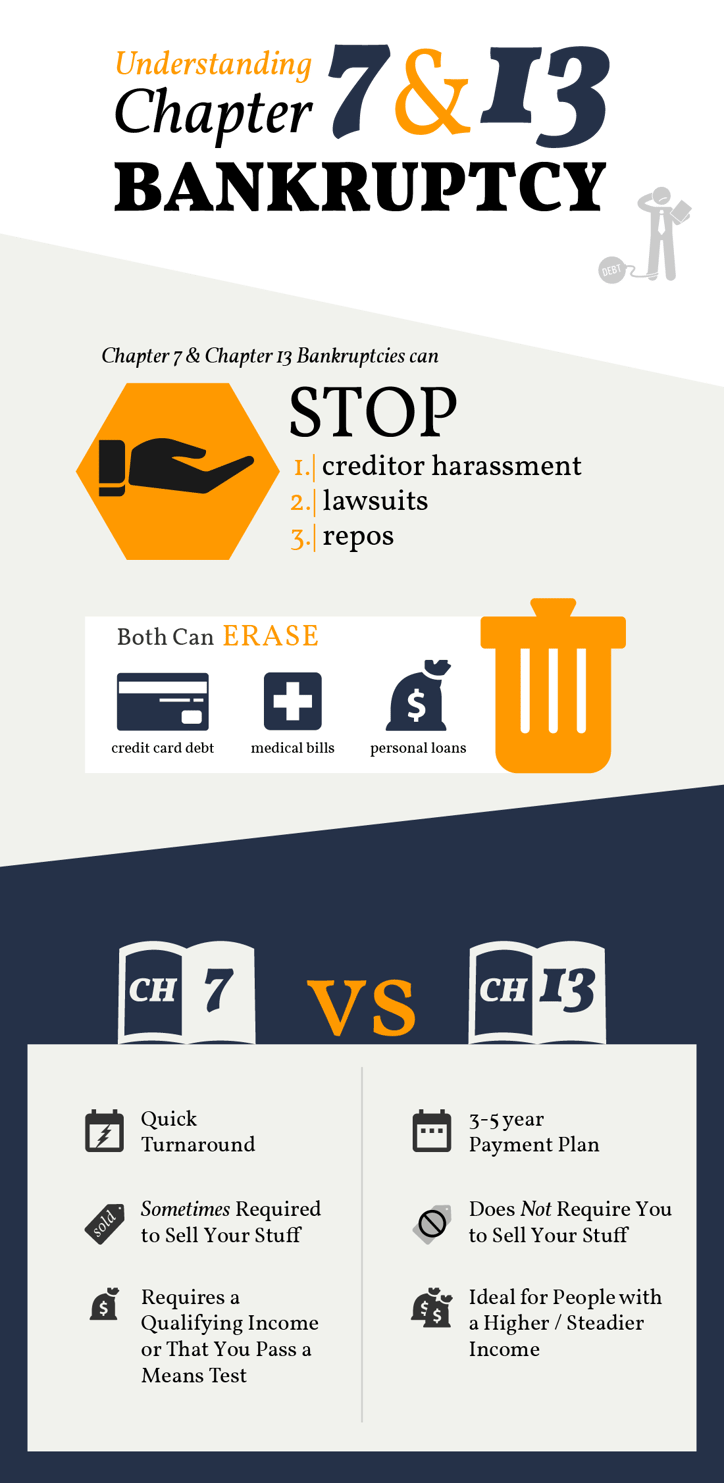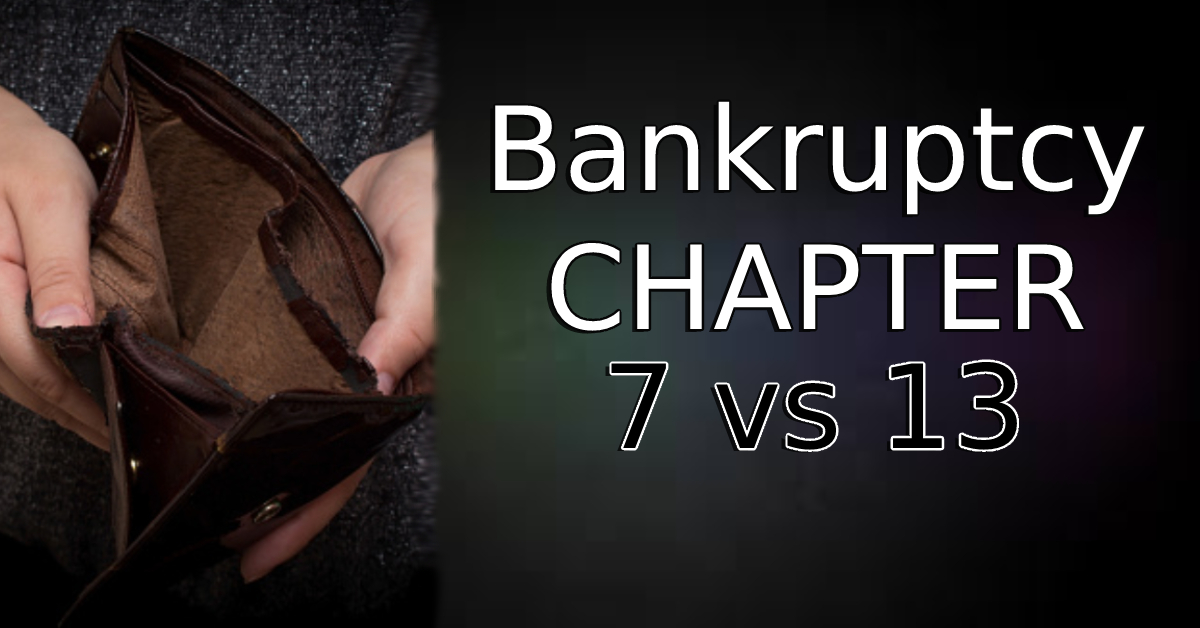What's The Difference Between Chapter 7 11 And 13
What's The Difference Between Chapter 7 11 And 13 - [track latest developments in bankruptcy with bloomberg law.] chapter 7 bankruptcy and chapter 11 bankruptcy are both common options for businesses in declaring bankruptcy. In chapter 7 asset cases, the debtor's. If the court approves the plan of payment, the debts will be paid in full or partially by the chapter 13. The critical difference is that chapter 7 revolves around the liquidation of assets to repay debts. This is because chapter 7 typically results in the liquidation of the entire company, and chapter 13 is not available for business entities. Rarely businesses — sell their. Web the main difference between the two is the amount of money the debtor owes. For some people, the time period must be five years. Web child support or alimony student loans auto loans chapter 7 bankruptcy vs. Web chapter 13 enables individuals with regular incomes, under court supervision and protection, to repay their debts over an extended period of time according to a plan.
Web rescuing your business chapter 11 is generally the best way to alleviate your liabilities without going out of business. [track latest developments in bankruptcy with bloomberg law.] chapter 7 bankruptcy and chapter 11 bankruptcy are both common options for businesses in declaring bankruptcy. But there are different types of bankruptcies, and the most common ones are chapter 7, 11, and 13… If you are running a sole proprietorship, however, chapter 13. In contrast, chapter 13 is a debt. Corporations cannot file under chapter 13. The plan may call for full or partial repayment. Web chapter 7 provides liquidation of an individual’s property and then distributes it to creditors. If the court approves the plan of payment, the debts will be paid in full or partially by the chapter 13. Web emily norris updated june 21, 2022 reviewed by pamela rodriguez companies that find themselves in a dire financial situation where bankruptcy is their best—or only—option have two basic.
Chapter 7 is designed to eliminate debt by liquidating assets. Web the main difference between the two is the amount of money the debtor owes. For some people, the time period must be five years. Chapter 13 focuses on restructuring debt to be fully or partially paid off over. The plan may call for full or partial repayment. There is no limit to the amount of money owed by debtors filing for chapter 11. But there are different types of bankruptcies, and the most common ones are chapter 7, 11, and 13… If the court approves the plan of payment, the debts will be paid in full or partially by the chapter 13. [track latest developments in bankruptcy with bloomberg law.] chapter 7 bankruptcy and chapter 11 bankruptcy are both common options for businesses in declaring bankruptcy. Web perhaps it was unsecured creditors like credit card companies.
Bankruptcy Chapter 7 vs 13 What is The Difference
If the court approves the plan of payment, the debts will be paid in full or partially by the chapter 13. When filing for chapter 13, a debtor needs. Often called the liquidation chapter, chapter 7 is used by individuals, partnerships, or corporations who are unable to repair their financial situation. If you are running a sole proprietorship, however, chapter.
45+ Difference Between Chapter 7 And Chapter 11
The critical difference is that chapter 7 revolves around the liquidation of assets to repay debts. Often called the liquidation chapter, chapter 7 is used by individuals, partnerships, or corporations who are unable to repair their financial situation. In chapter 7 asset cases, the debtor's. [track latest developments in bankruptcy with bloomberg law.] chapter 7 bankruptcy and chapter 11 bankruptcy.
The Difference Between Chapter 7 & Chapter 13 Bankruptcies
Web child support or alimony student loans auto loans chapter 7 bankruptcy vs. In contrast, chapter 13 is a debt. In a chapter 13 proceeding, the debtor must pay all or part of his debts from the future income over a period of three to five years through his chapter 13 plan. Corporations cannot file under chapter 13. Web chapter.
What's the Difference Between Chapter 13 and Chapter 7 Bankruptcy?
Web chapter 7 and chapter 13 are very different types of bankruptcy. Web some of the differences between chapter 7 and 13 bankruptcy include: This is because chapter 7 typically results in the liquidation of the entire company, and chapter 13 is not available for business entities. Either way, filing for bankruptcy can help waive those away. The critical difference.
What's the Difference Between Chapter 7 and Chapter 13 Bankruptcy?
Web some of the differences between chapter 7 and 13 bankruptcy include: But there are different types of bankruptcies, and the most common ones are chapter 7, 11, and 13… This is because chapter 7 typically results in the liquidation of the entire company, and chapter 13 is not available for business entities. Chapter 13 bankruptcy the biggest differences between.
What's the Difference Between a Chapter 7 and 13 Bankruptcy?
Often called the liquidation chapter, chapter 7 is used by individuals, partnerships, or corporations who are unable to repair their financial situation. For some people, the time period must be five years. In chapter 7 asset cases, the debtor's. Web rescuing your business chapter 11 is generally the best way to alleviate your liabilities without going out of business. In.
Difference Between Chapter and Lesson Compare the Difference Between
Corporations cannot file under chapter 13. In chapter 7 asset cases, the debtor's. In contrast, chapter 13 is a debt. The critical difference is that chapter 7 revolves around the liquidation of assets to repay debts. Chapter 13 bankruptcy the biggest differences between chapter 7 and chapter 13 bankruptcy are what happens to your property and who qualifies financially.
Tampa Bankruptcy Chapter 7 vs Chapter 13 Galewski Law Group
Web chapter 7 is the type of bankruptcy that most people imagine when they think of bankruptcy: Individuals are allowed to keep “exempt property.” the courts may provide businesses that file chapter 7. Web perhaps it was unsecured creditors like credit card companies. Web chapter 13 enables individuals with regular incomes, under court supervision and protection, to repay their debts.
37+ Can I File Chapter 7 Before 8 Years KhamShunji
Web emily norris updated june 21, 2022 reviewed by pamela rodriguez companies that find themselves in a dire financial situation where bankruptcy is their best—or only—option have two basic. This chapter of the u.s. The critical difference is that chapter 7 revolves around the liquidation of assets to repay debts. This is because chapter 7 typically results in the liquidation.
The Difference Between Chapter 11 and Chapter 7 Bankruptcy Ritter Spencer
If you are running a sole proprietorship, however, chapter 13. Corporations cannot file under chapter 13. This is because chapter 7 typically results in the liquidation of the entire company, and chapter 13 is not available for business entities. For some people, the time period must be five years. Web rescuing your business chapter 11 is generally the best way.
Either Way, Filing For Bankruptcy Can Help Waive Those Away.
For some people, the time period must be five years. Web chapter 13 enables individuals with regular incomes, under court supervision and protection, to repay their debts over an extended period of time according to a plan. Web chapter 7 and chapter 13 are very different types of bankruptcy. Web chapter 7 vs.
In A Chapter 13 Proceeding, The Debtor Must Pay All Or Part Of His Debts From The Future Income Over A Period Of Three To Five Years Through His Chapter 13 Plan.
Web the main difference between the two is the amount of money the debtor owes. If you are running a sole proprietorship, however, chapter 13. When filing for chapter 13, a debtor needs. Chapter 7 is designed to eliminate debt by liquidating assets.
In Contrast, Chapter 13 Is A Debt.
Rarely businesses — sell their. Web chapter 7 is the type of bankruptcy that most people imagine when they think of bankruptcy: But there are different types of bankruptcies, and the most common ones are chapter 7, 11, and 13… Web what is the difference between chapter 7, 11, 12 & 13 cases?
Web Perhaps It Was Unsecured Creditors Like Credit Card Companies.
In chapter 7 asset cases, the debtor's. Web emily norris updated june 21, 2022 reviewed by pamela rodriguez companies that find themselves in a dire financial situation where bankruptcy is their best—or only—option have two basic. Web some of the differences between chapter 7 and 13 bankruptcy include: If the court approves the plan of payment, the debts will be paid in full or partially by the chapter 13.









